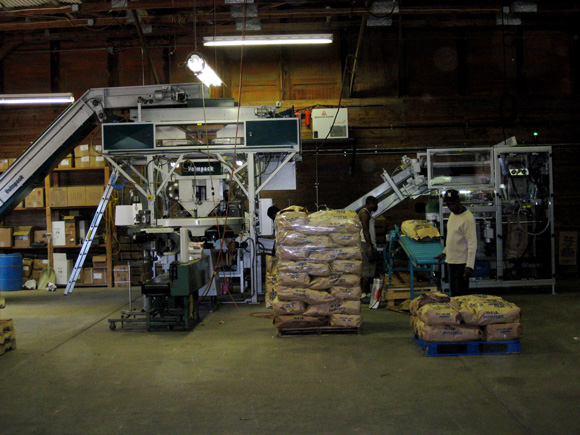Farming Tradition
on Long Island
(1874-2009)
Back to Martin & Anna Wesnofske
Homepage
Martin I
From Farm Worker to Farm Owner
Little Neck Rd, Queens, NY
(now Little Neck Parkway)
In the January 5, 1892 purchase recorded in the Queens County records, Martin paid
$16,000 for the 97 acres. He bought the farm from Ernest Holtz.
Holtz had purchased the farm four years earlier for $14,000. (See box below left.)
The deed indicates Ernest Holtz did have a mortgage on the property to
be paid off.
A serious economic depression followed in 1893 -- but Martin was solidly established on the farm with ownership and serving local markets with his farm products. 'Global' farmers of the time growing wheat and cotton bought in world markets were severly affected. Unemployment estimates for 1893-94 are between 12.5% and 18%.
A serious economic depression followed in 1893 -- but Martin was solidly established on the farm with ownership and serving local markets with his farm products. 'Global' farmers of the time growing wheat and cotton bought in world markets were severly affected. Unemployment estimates for 1893-94 are between 12.5% and 18%.
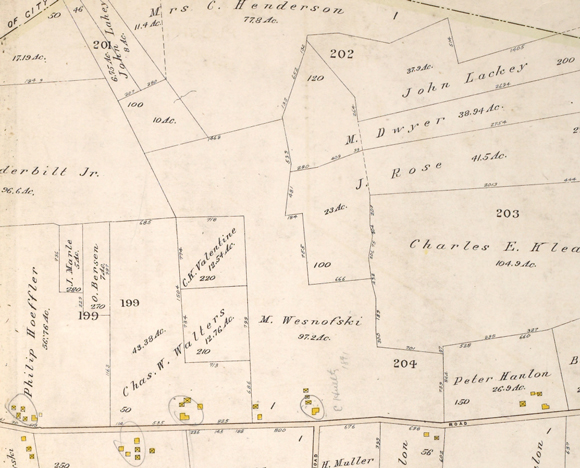
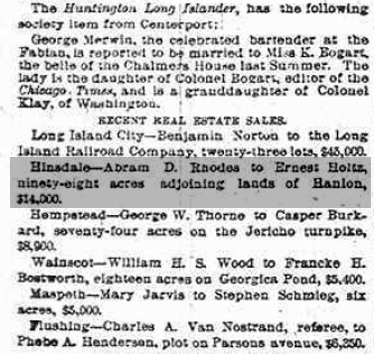
Above:
Brooklyn Daily Eagle 1888
Sale to Ernest Holtz who sells to
Martin Wesnofske in 1892.
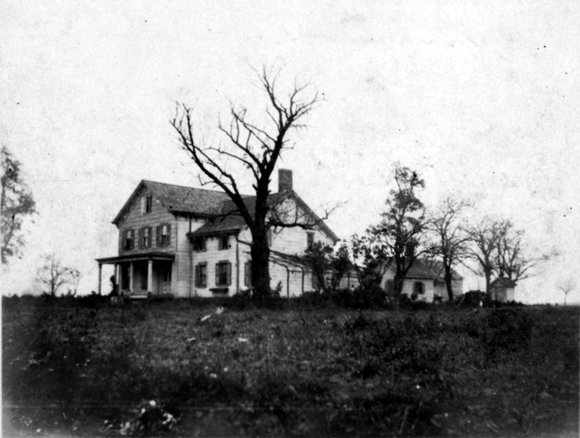
Martin Wesnofske Farmstead 1892-1910
Today's Hillside Ave & Little Neck Parkway
\
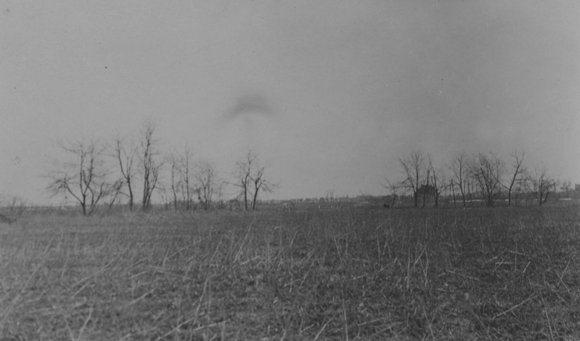
Above: Old Martin Wesnofske farm fields
Taken from today's 81st Ave & 263rd Street
Queens, NY
1922 Photos by Percy Loomis Sperr
Commissioned by the New York Public Library just prior to development in Eastern Queens during the "Roaring 20's".
Back to Martin & Anna Wesnofske
Homepage
This is the Wesnofske
Long Island Farming Tradition Page
Old County Road, Hicksville, Nassau County, NY
(1900-1939)

1939 Real Estate Atlas
showing location of
John Wesnofske Farmstead


Loading the Speedwell for market with
produce from the mule drawn field wagon
License plate is 1914. John was an early user of truck transport to market.
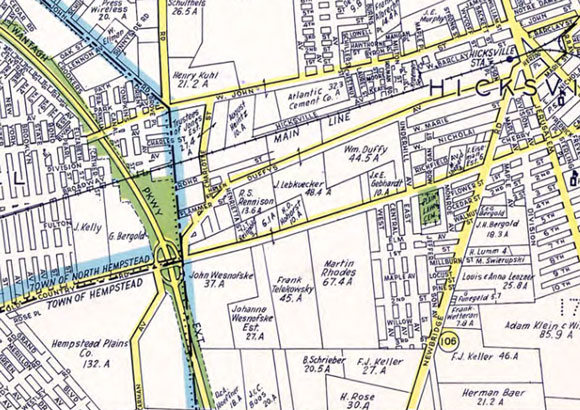
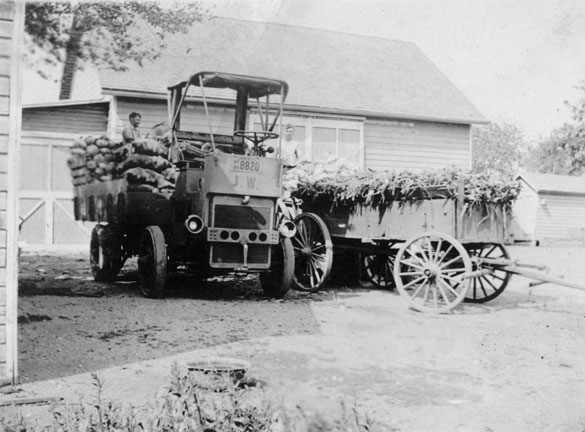

Picking Potatoes (1919)
By 1919 mechanized digging drawn by tractors had arrived; but picking potatoes, and placing thm in burlap sacks in the fields was still hand labor. Notice steel wheels with large cletes for traction in fields. The youngest five of the ten John Wesnofske children are picking.


Mule drawn cultivation (1917)
Eventually culitvators would be fixed to tractors with fixed width wheels. As farming became more mecahnized for planting, cultivating, spraying, digging, loading and harvesting from the fields, precision in making rows uniform in size and parallel became necessary.
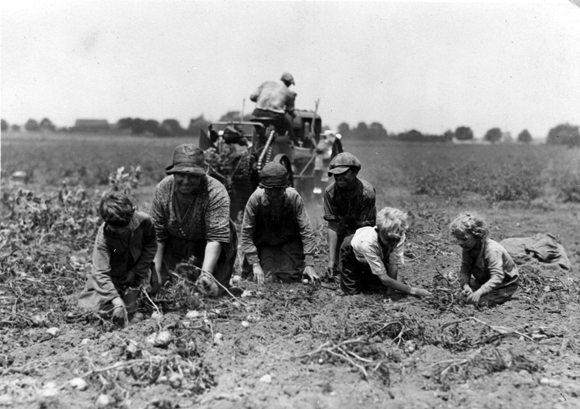
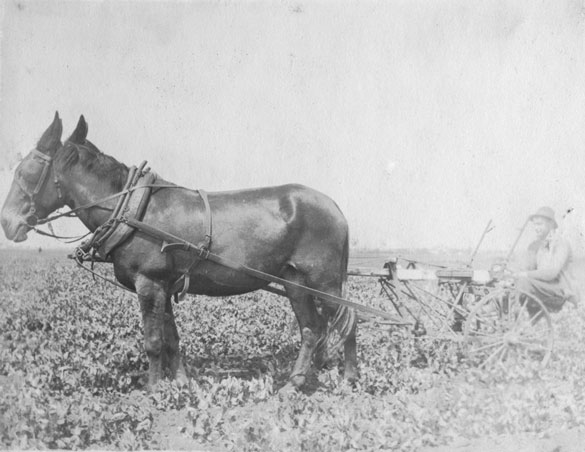

Gathering corn stalks (1915)
A farmhand and son Leonard Wesnofske working to gather cornstalks on the Old County Road Hicksville farm for future use as animal fodder.


John's two mule drawn wagons.
Some farmers in Hicksville favored horses over mules. John's 1st cousin Andrew Manelski at Woodbury Road and Miller Road, Hicksville, had stables for 17 horses for farm work.
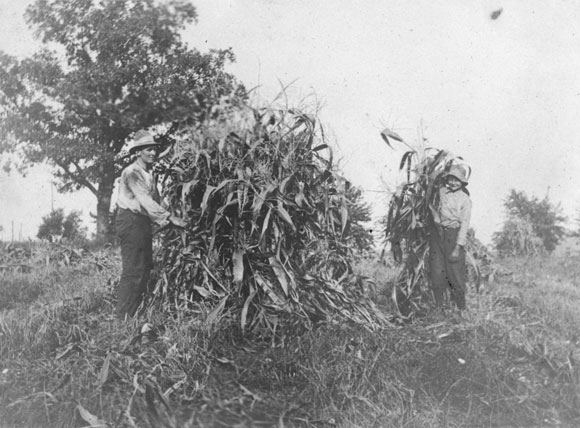
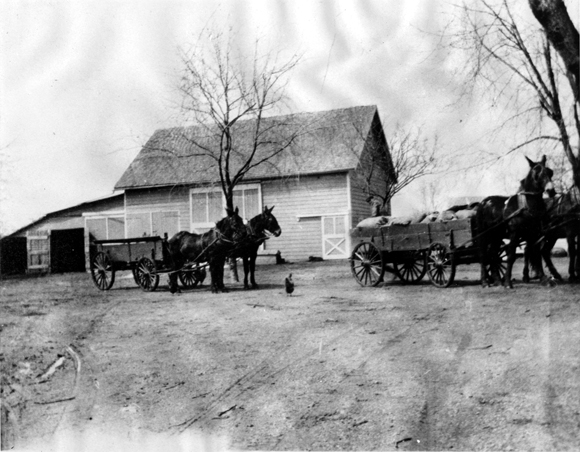
BELOW:
1910 US Census page listing
Joseph and Frank as neighboring farmers on Uniondale Avenue, Hempstead Town.
Joseph owns his home farm.
Frank rents his home farm, probably from his older brother Joseph.
The census indicates the presence of farm help living in the household (or perhaps in the barn).
With daughters concentrated early in the families birth order and sons too small to help with heavy labor tasks, hiring farm help was a necessity. This problem and solution was confronted by older brother John in Hicksville as well.
Homepage
This is the Wesnofske
Long Island Farming Tradition Page
2nd and 3rd oldest Sons
Joseph &
Frank
Uniondale Ave, East Hempstead
circa 1905-1920

1909 Real Estate Map of farm
Below:
2 Joseph Wesnofske parcels on the right side of Uniondale Ave. that runs from center top to bottom of map.
1914 E. Belcher Hyde Real Estate Atlas Page 23
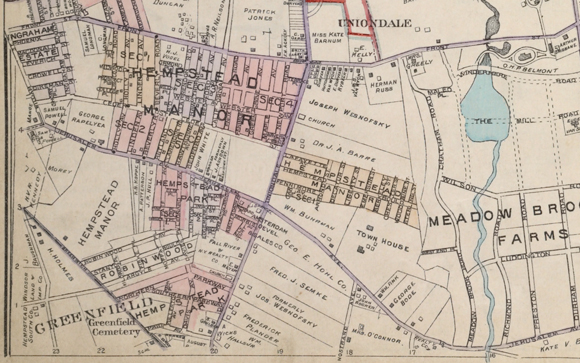
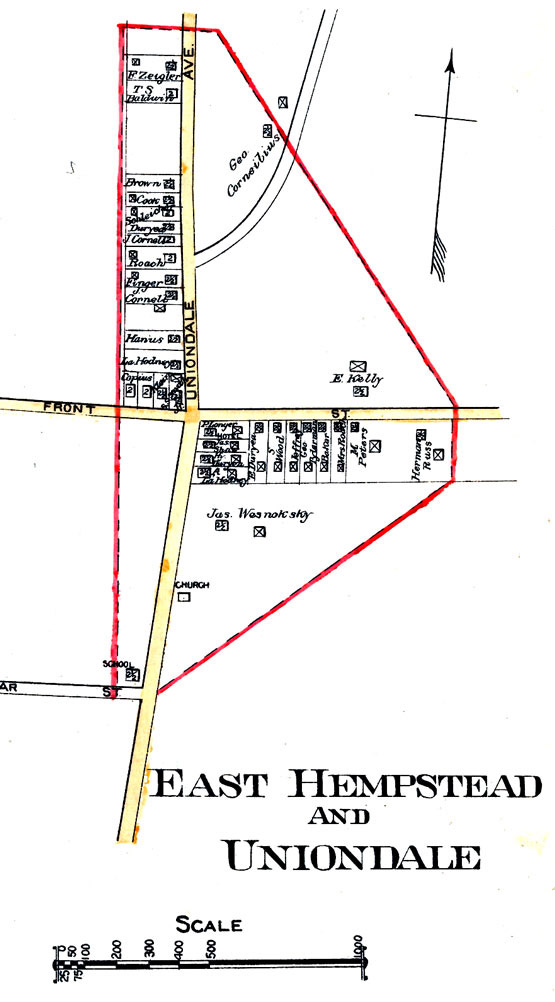
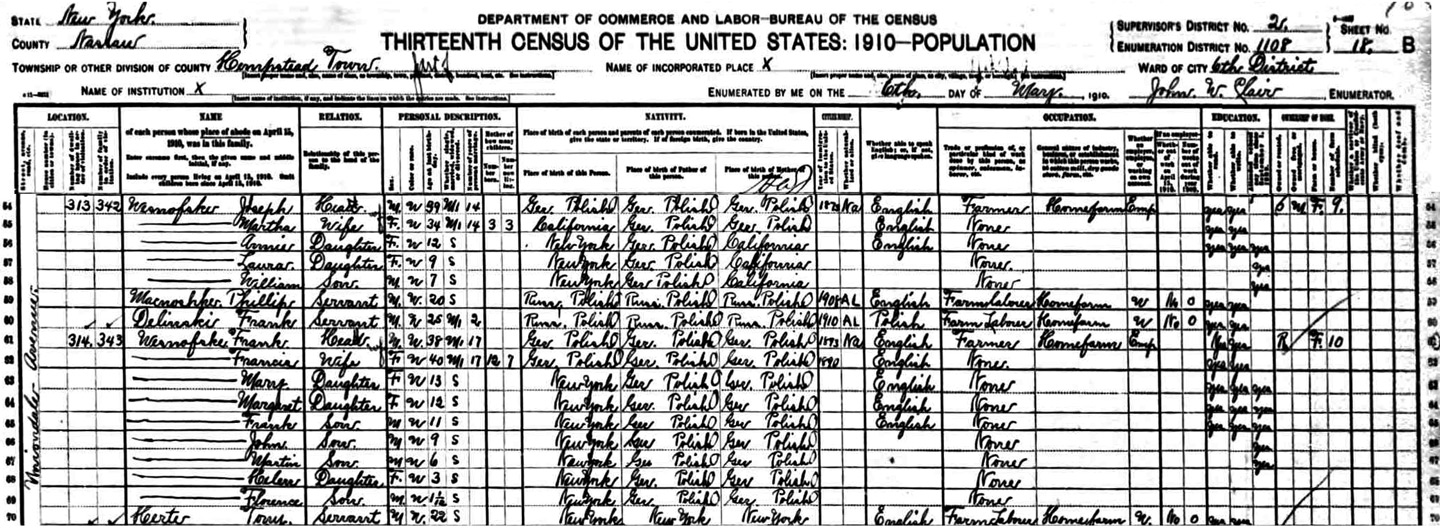
Homepage
This is the Wesnofske
Long Island Farming Tradition Page
Jericho, NY

Henry and his corn haul
Jericho Turnpike
circa 1920


1923 was a bad year.
From the Feb 24, 1923 NY Times.
Henry recovered to continue farming for a while until he changed careers out of farming amidst the economic chaos of the depression.
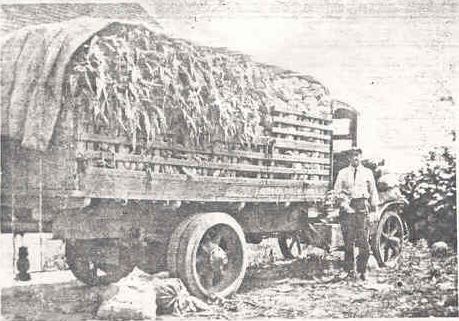
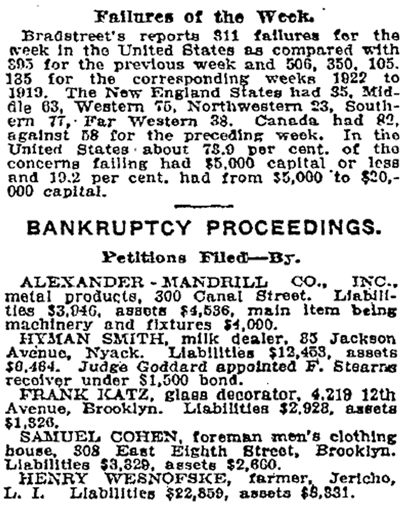
Middle Son Martin II
Syosset, Huntington, Greenlawn, N.Y.
1914-1933

Martin II with son Harold driving, Edwina standing and other older children
1929


Martin II's Fordson Tractor
1929
Notice the Fordson's metal wheels and cletes for traction. Hand crank starters were often dangerous because of engine "kickback" which would suddenly rotate the crank the opposite way from which an individual was cranking it. Hand, wrist, arm and shoulder injuries were a common event for hand cranked engines on early trucks, cars and tractors.
Henry Ford's Fordson succeeded an earlier agricultural tractor he called the "Automobile Plow" and which had limited sales. The Fordson became very successful in the 1930's and was a model made for several decades.
Seems Martin II had a very talented family dog behind the wheel of his Fordson. Name of the family pet is currently not known.
(photos provided by grandaughter Anna Blinn)
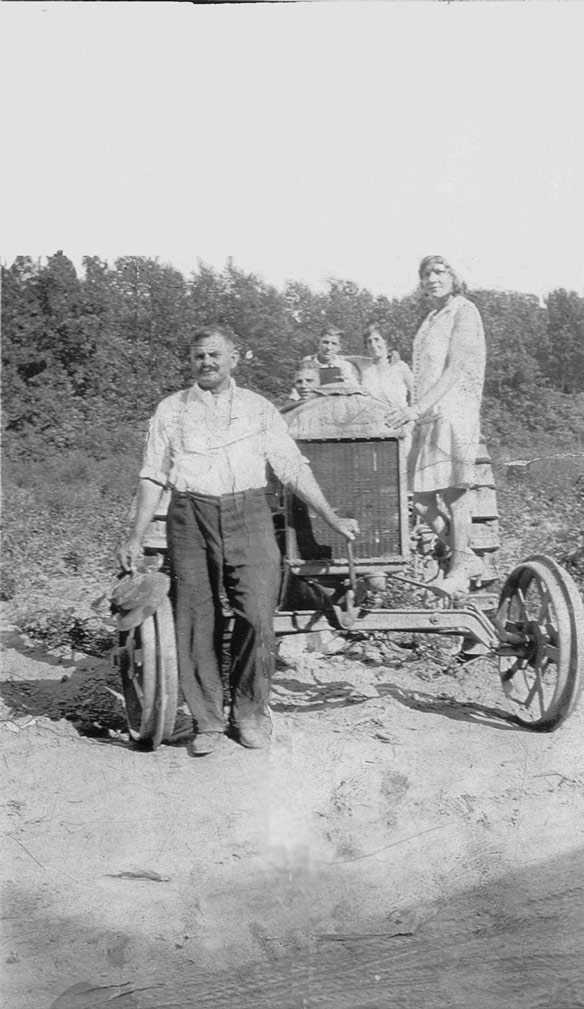
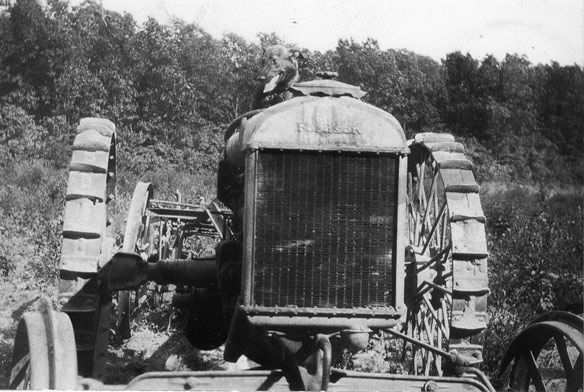
Woodbury Rd., Hicksville, N.Y.
Echo Lane, Melville, N.Y.
1925-1960

1939 Real Estate Map
Shows Joseph's 49 acre farm on Woodbury Road near the intersection with South Oyster Bay Road.


Newsday, March 22, 1961
1960 was the last year farming for Joseph Wesnofske. The State of
New York had used condemnation to acquire the farmland of Joseph in
Melville to build a home for retarded children. After the land
was taken and settlement of compensation through courts, farming ended.
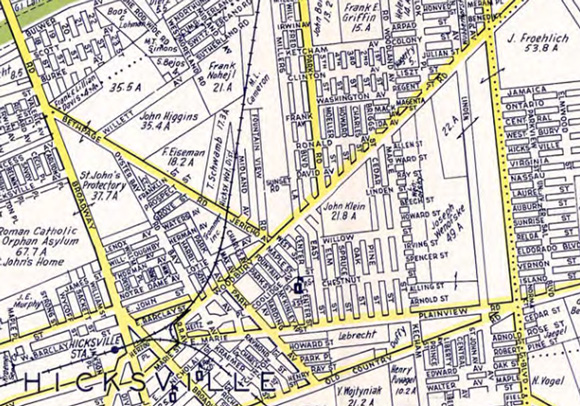
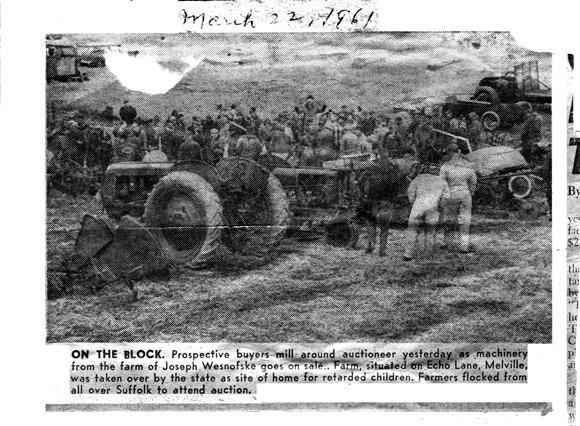
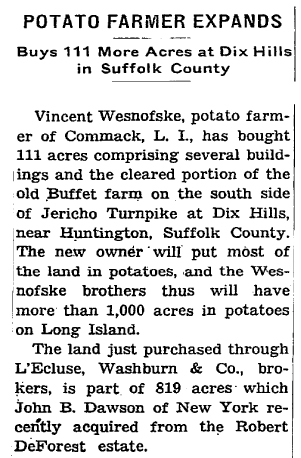
Commack, N.Y. - Dix Hills, N.Y.
1940 - 1957
Sagg Main Street, Sagaponack, N.Y.
1957 - 1966

Vincent's Dix Hills expansion
August 1, 1943 NY Times

Vincent Sr amidst his Sagaponack potatoes in
full bloom in June 1959.
Back to Martin & Anna Wesnofske
Homepage
This is the Wesnofske
Long Island Farming Tradition Page
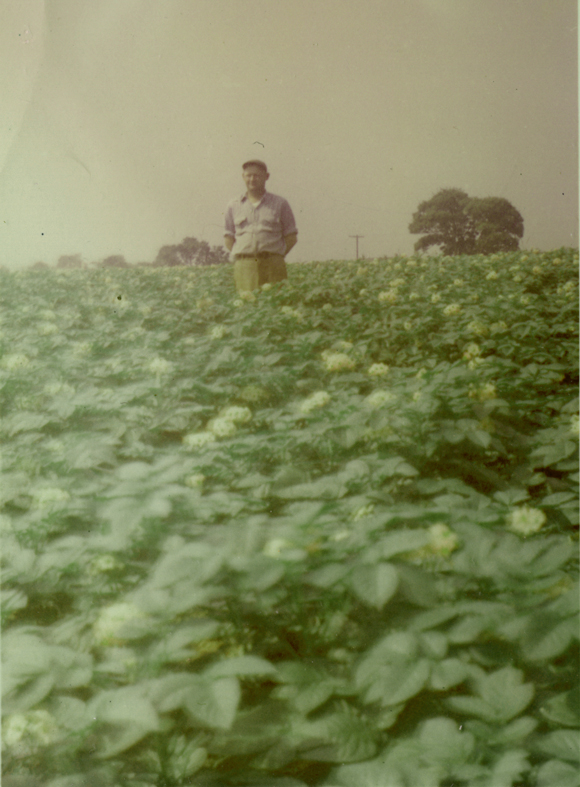

Vincent Wesnofske 1959 Farm Yard
Sagaponack Main Street
Oliver 770 and 880 models were
popular at the time among farmers along with some Farmall 'M's. John Deere tractors have come into dominance by the late 1980's becasue of their improved power, traction and technology over other makers.


1959 Vincent Sr. harvesting and
Vincent Jr. driving bulk loading GMC truck.
Note the weighted tractor wheels for additional traction to handle pulling the heavy and awkwardly maneuvering John Bean potato combine. Potato combines replaced simpler mechanical digging, hand picking and hand loading of trucks in the mid 1950's. Larger tractors and four wheel drive made for better combining in recent years.
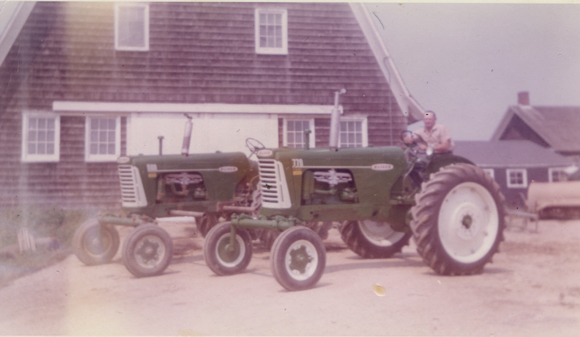
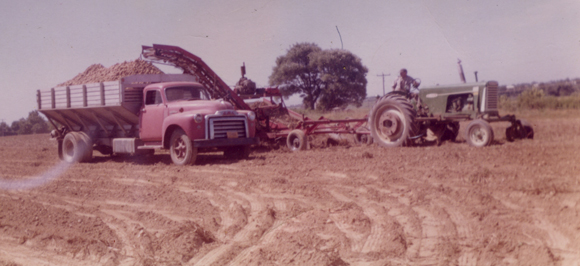
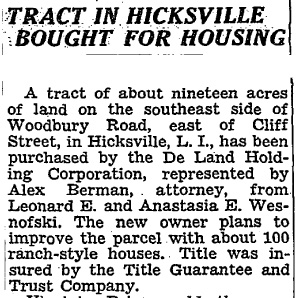
Woodbury Rd., Hicksville, N.Y.
Melville, N.Y.
1930-1960

Leonard farmed 19 acres in Hicksville (see blue arrow) next to oldest brother Joseph on Woodbury Rd until development made farming impossible. Both Leonard and Joseph then moved farm operations to Melville, NY until their retirements.
1939 Real Estate Atlas
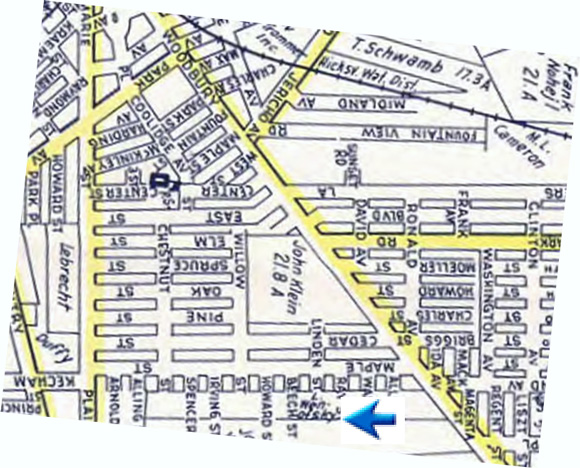
Homepage
This is the Wesnofske
Long Island Farming Tradition Page
Click: South Oyster Bay Rd., Hicksville, N.Y.
Melville, N.Y.
1928-1954
Cook's Lane Farm;
Bridgehampton, N.Y.
(locally Hayground; sometimes Water Mill, N.Y.)
1942-1980
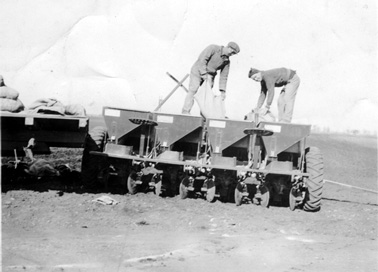
"IRON AGE" Planter 1948 Hicksville
The first 4 row potato planter used in farming on Long Island by Remi Wesnofske on his South Oyster Bay Road farm..
Manual labor to lift, carry and dump fertilizer and cut seed potatoes into the planter was still a heavy chore.
Eventually bulk handling of fertilizer and seed potatoes in hopper styled truck bodies equipped with augurs to lift fertilizer and seed from the bulk hoppers into the mechanical planter in the field would reduce strenuous labor tremendously
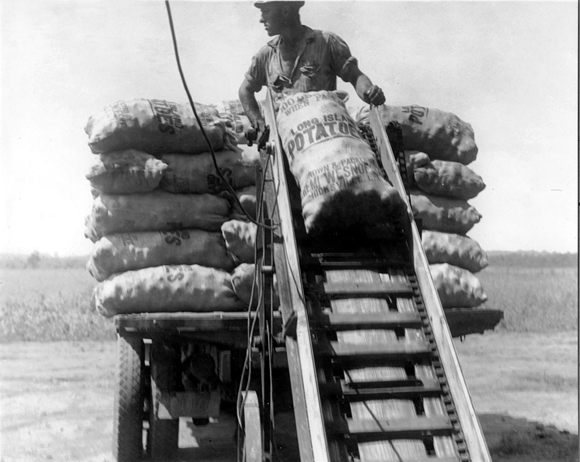
ABOVE: Circa 1948
A Boggs constructed wooden loader, an early mechanical assist in removing the need for human effort to elevate bagged material of both raw planting components and finished potatoe produce bags onto trucks as you see in this photo.
Boggs also made early quality potato grading machines of mature yellow pine construction without bearings and bushings. Oil/grease lubricants would be placed in the drilled out sockets of the pine wood for the rotating rods carrying grader chains and chain driven gears. That would provide efficiencies that would almost compete with a modern day expectation of metal use.
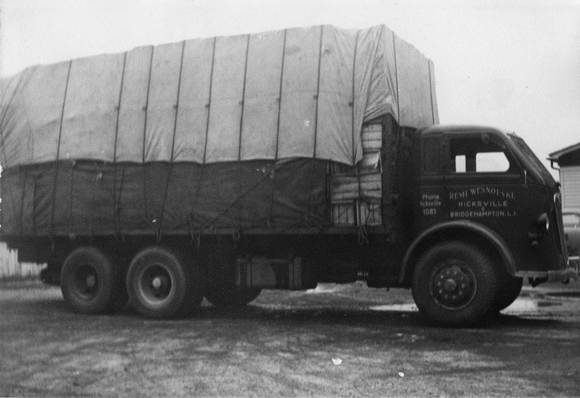
AUTOCAR - More efficient 1950's market transport?
The snub-nose or cab-over-engine Autocar truck Remi used to have drivers deliver produce to the Washington Street market in Manhattan from Hicksville. Joe and Ben Froehlich, Joseph Froehlich, Jr (JoJo) were those who made the 100 mile round trek from Hicksville in the Autocar with its noisy cab, unairconditioned and hot engine environment, very hard seats, and tough turning wooden steering wheel. Produce like cabbage and lettuce in front and potatoes in 100 lb. sacks in the rear that were stacked sky high to maximize delivery economies. Two Manhattan produce brokerage firms, D.J. Rothman and Opolinsky Bros. were primary market outlets. The Autocar would age and be replaced by a snub nosed White tractor and trailer in the mid 1950's. In hot weather, loads would go bad. Crates/bags of corn and greens would be iced and tarped to reduce heat damage.
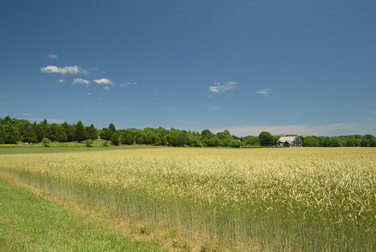
Remi's Ocean View Farm,
Brick Kiln Rd
Bridgehampton, N.Y.
1954-1980
The field planted with grain during a season of crop rotation and 'resting' the land. In 2009, Remi's 3 grandsons/brothers Wesnofske have the farm in potatoes.
Remi's Technological Adapations and Firsts
First use of rubber tired tractors:
Lou Szymanowski (Long time farm hand) "Rubber tires can't do as well as
metal wheels and cletes. They'll never work".
First use of 4 row potato planters: first in Hicksville 1946, then in Bridgehampton and other Remi Wesnofske farming enterprises. Advanced plows, potato combines and other field machinery followed.
Early adapter of mechanized processing equipment: Remi bought wooden and later steel/rubber combo loaders and conveyors early to eliminate hard lifting and moving of heavy farm commodities. Graders, washers, scales, sewing machines, pallett use, forklifts, building design modifications all followed.
Experimentation in irrigation: used irrigation techniques to enhance productivity of Hicksville lands; abandoned pumped and piped irrigation in Bridgehampton, Sagaponack and Water Mill farms as inefficient.
Used newly evolved aerial photography and scientific USDA soil maps for scouting farms for purchase and rental: Hicksville (yes); Melville (yes); Easthampton (no); Bridgehampton (yes); Wayland, NY (Steuben County) (yes); Homestead, FL (yes); Crescent City, FL (yes); Cumberland Plateau, Tennessee (no); Columbia River Valley, WA (no).
Transportation innovation: finding vehicles to meet the changing load demands and traffic requirements for accessing New York City markets: snub nosed tractors, movable fifth wheels for length regulations and short, light trailer bodies for city traffic manueverability.
Equipment and early hydraulic control adapatations: As heavier tractor drawn equipment developed like the John Bean and Lockwood potato combines, lightweight tractors struggled for operational stability in fields that were hilly, sloped or muddy from rains. Remi first attached hydraulic cylinders from the hitch on the tractor to the shaft on the drawn equipment that would control and align the field machinery for effective operation. In particular, it made potato combining operations much more effective.
First use of 4 row potato planters: first in Hicksville 1946, then in Bridgehampton and other Remi Wesnofske farming enterprises. Advanced plows, potato combines and other field machinery followed.
Early adapter of mechanized processing equipment: Remi bought wooden and later steel/rubber combo loaders and conveyors early to eliminate hard lifting and moving of heavy farm commodities. Graders, washers, scales, sewing machines, pallett use, forklifts, building design modifications all followed.
Experimentation in irrigation: used irrigation techniques to enhance productivity of Hicksville lands; abandoned pumped and piped irrigation in Bridgehampton, Sagaponack and Water Mill farms as inefficient.
Used newly evolved aerial photography and scientific USDA soil maps for scouting farms for purchase and rental: Hicksville (yes); Melville (yes); Easthampton (no); Bridgehampton (yes); Wayland, NY (Steuben County) (yes); Homestead, FL (yes); Crescent City, FL (yes); Cumberland Plateau, Tennessee (no); Columbia River Valley, WA (no).
Transportation innovation: finding vehicles to meet the changing load demands and traffic requirements for accessing New York City markets: snub nosed tractors, movable fifth wheels for length regulations and short, light trailer bodies for city traffic manueverability.
Equipment and early hydraulic control adapatations: As heavier tractor drawn equipment developed like the John Bean and Lockwood potato combines, lightweight tractors struggled for operational stability in fields that were hilly, sloped or muddy from rains. Remi first attached hydraulic cylinders from the hitch on the tractor to the shaft on the drawn equipment that would control and align the field machinery for effective operation. In particular, it made potato combining operations much more effective.

circa 1965
Remi with his "cab over engine" White tractor and a flat bed trailer loaded with 100 lb. sacks of potatoes.
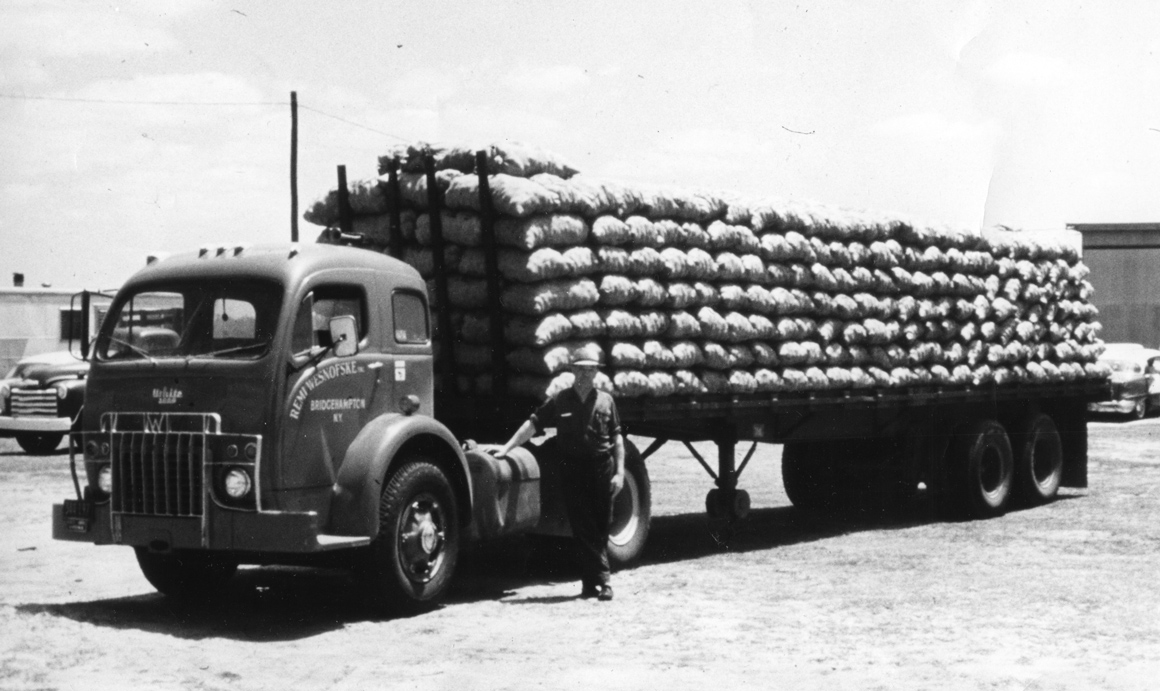
Homepage
This is the Wesnofske
Long Island Farming Tradition Page
Cutchogue, N.Y. Peconic, N.Y.
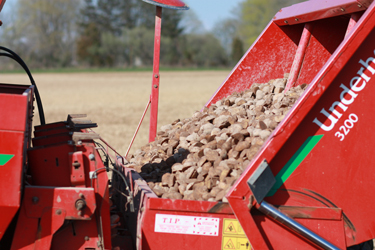
Bridgehampton, N.Y.
1980-2005

Seed potatoes are mechanically cut in the Spring and loaded from bulk trucks directly into the planter.

With Precision
Clyde Wesnofske planting Cooks Lane
(looking north to the hills)
Today automated equipment and hi tech tractors make planting easier. Fertilizer and seed potatoes fill the bins of the planter
through mechanical rather than hand methods. The marker arm makes for parallel rows by aiming the tractor on the line on the return trip from the other end of the field.


Clyde Wesnofske 'hilling up' weeks after planting.
Cooks Lane, Bridgehampton
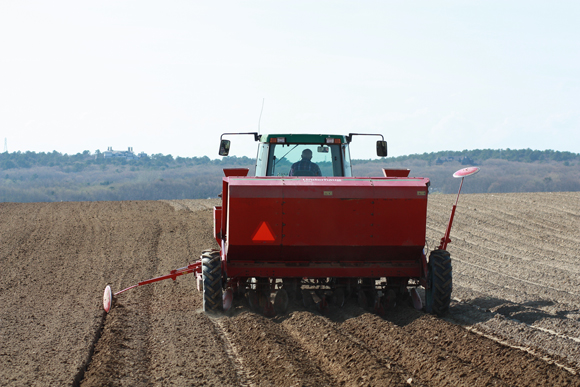

Halsey Lane, Bridgehampton, N.Y.
1961-1992

In Formation 1985
Ray Wesnofske Farm
Halsey Lane (East side)
Bridgehampton, NY
Farm helpers Walter 'Whitey' Jazombeck in front on the Oliver 1950T with Paul Dankowski and Gary Kalish driving the Oliver 1850 tractors to 'hill up' the rows of potatoes and cultivate to keep down the weeds.


1985 Halsey Lane Farm (East side)
Bridgehampton, NY
Equipment storage, grading and processing barns and shop for farm repair was to be found on Maple Lane in Bridgehampton next to the railroad station.
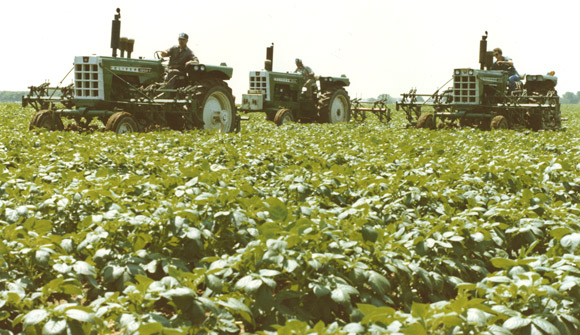
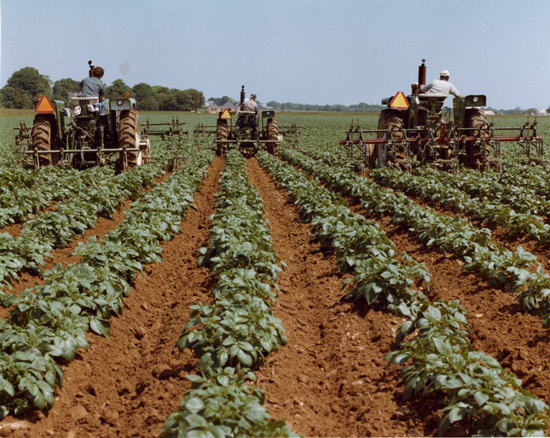
Homepage
This is the Wesnofske
Long Island Farming Tradition Page
Cutchogue, N.Y. Peconic, N.Y.
1995-today
Back to Martin & Anna Wesnofske
Homepage
This is the Wesnofske
Long Island Farming Tradition Page
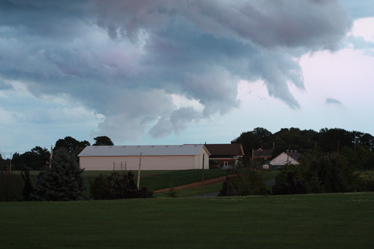
Richard, John and Michael
Bridgehampton, N.Y.
2005-today

Ricky Wesnofske Sr. plowing Spring 2009

There was too much rain in 2009 growing season.
Cooks Lane Farm
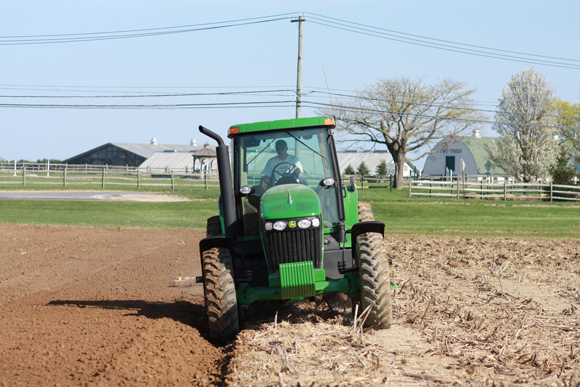

Cooks Lane 2009


Mike Wesnofske with new John Deere 2009
Attachment on rear is 'subsoiler' to loosen up compacted soils from silting action and hardening of clay elements in soil from excess rains and from weight of heavy equipment in fields.
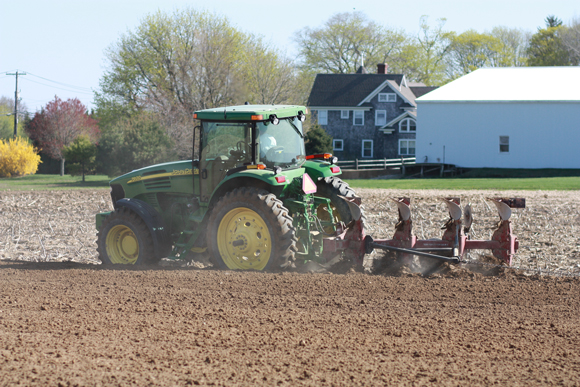
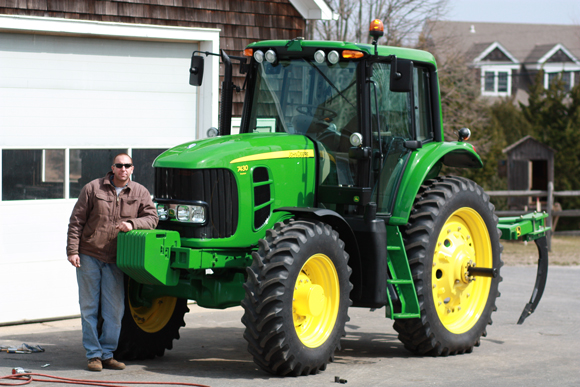
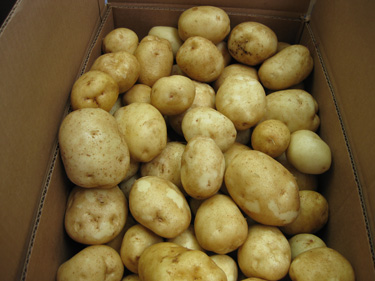

Packing shed
Potato handling is almost all mechanical with weighing, bagging, sealing bags, baling and moving done by machines. Shipping pallett loads became standard in the mid 1960's versus hand carried bag by bag loading.

Besides potatoes, corn and cover crops are grown that are sold into different markets from the Bridgehampton fields.
